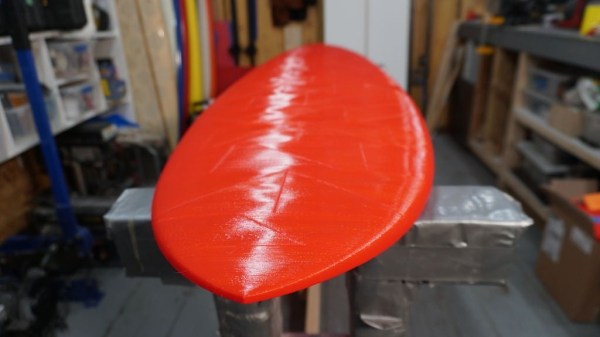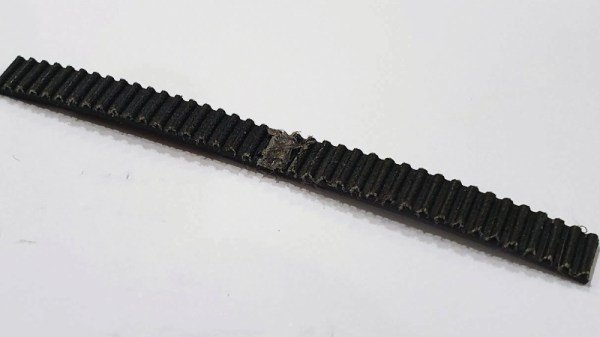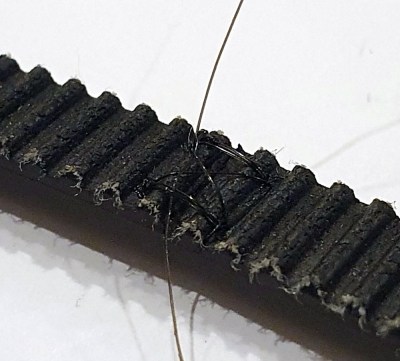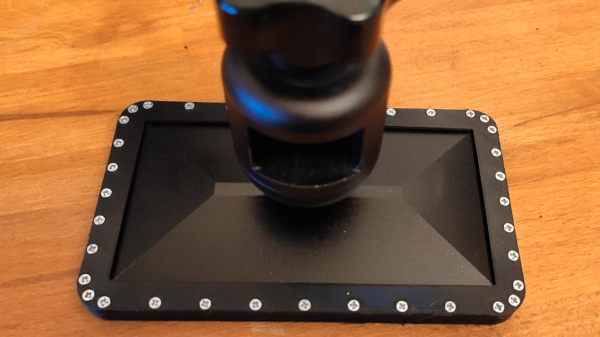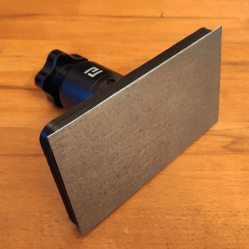People always tend to push the boundaries of what is doable with a 3D printer. This is also true for [AndrewW1977] when he decided to 3D print a full-sized functional surfboard.
With just over nine full days of printing time, 95 individual pieces, and using 3.1 kg of PLA (not counting all the test prints), this is certainly a monumental project. One of the bigger issues [AndrewW1977] had to solve was avoiding air pockets inside the board. Ideally, you would want to end up with only one continuous hollow chamber in order to easily vent all the air inside the board when it heats up. [AndrewW1977] chose to overcome this problem by using zero infill for each individual piece. The pieces were then connected with the help of alignment pins that have a central hole thereby connecting all hollow chambers.
By using a triangular shape, he managed to print all pieces without using supports. After gluing them together the whole board was covered with fiberglass and epoxy resin similar to traditional surfboard building. Unfortunately, due to the current situation with Covid19 [AndrewW1977] remains short of showing us the board in action. In case you have a 3D printer at home and lots of spare time during lockdown, [AndrewW1977] has published all files for his surfboard on Thingiverse.
As [AndrewW1977] points out in the video embedded below other people have already done similar projects. From jet boats to electric hydrofoils it seems that water sports and 3D printing are a perfect match.
Continue reading “Don’t Let Your PLA Filament Hang Loose With This 3D-Printed Surfboard”

